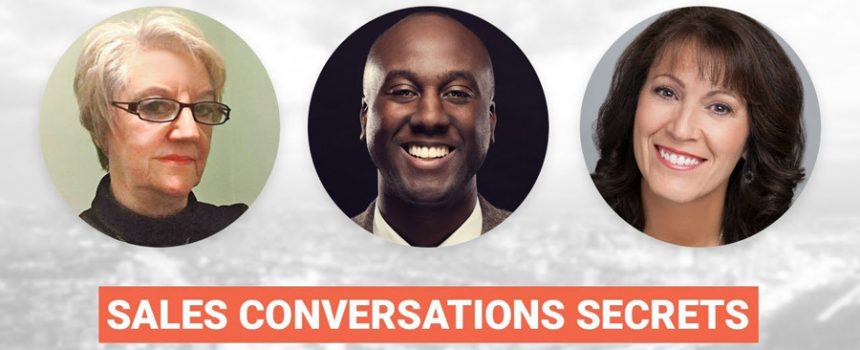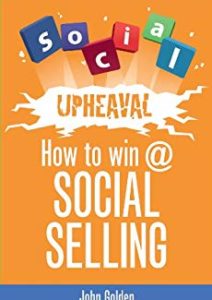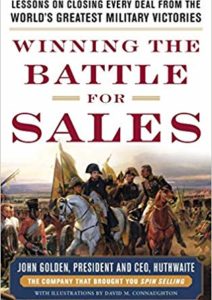Helping people have better conversations in sales is crucial. Especially in the modern era of selling, creating connections and making sales is largely done through a conversation. This article will help you learn actionable insights and the top secrets to having better sales conversations that will create connections with leads and secure more deals.
What is a Sales Conversation?
There is a difference between talking to a prospect and having a sales conversation. A sales conversation is very different from pitching. Many salespeople go into an interaction ready to give their pitch, which gives the buyer or prospect the option to agree or disagree. A conversation, by contrast, reduces the choices and the opportunity to duck out by creating a two-way flow of information. It’s productive because it’s focused on what’s in it for the buyer, and how to solve the buyer’s problems, and it ends with a clear commitment or call to action or decision for what is to come. It also beings at a place of mutuality.
- A conversation should be mutually understood and transparent.
- Sales calls do not have to end with a positive call to action. A no can be just as powerful as a yes if it’s mutually understood.
- The purpose of a sales conversation is to create contacts and advocates. Even if they say no, both parties should still be better off by having had that conversation.
Opening a Conversation:
There is no excuse to not know at least one personal thing about a prospect before engaging with a person. Between LinkedIn and other information available online, there is a plethora of content out there to help you find a bond between you and the buyer.
- Look for things that you have in common based on their profiles, and start the conversation with that.
- Once you have the rapport going, you can go into what they need and what they are looking for.
- All conversations should be centered around preparation done ahead of time to have a real, mutual discussion.
Engaging the Prospect:
After you’ve opened the conversation, it can be challenging to engage the prospect and get them to join the discussion. You have to be clear with your intent right in the beginning. After you’ve opened the conversation with a commonality or something you’ve gathered from their online profiles, it is then simple to take next steps.
The next step has to be about their opinion around whatever the specific insight is. It could be something as simple as, “what are your views on this particular area?” “How have you found “blank” impacts your business today?”
Your goal is to get them engaged and speaking as fast as possible, and opinion based questions can do that very powerfully.
- You have to ask something that is relevant and that they can answer.
- Being ready with a few different questions is smart. In addition to asking their opinion, you could ask about business or personal matters, and other topics of discussion.
Empathy in Sales Conversations:
Many people don’t understand what empathy means, or the fact that it is crucial when trying to have a sales conversation. It is a core component that enables us to think, feel, and see as the other person to feel trust. It plays a significant role. A conversation is two human beings connecting. Both people are participating. With any prospect conversation, they are immediately looking for clues that indicate whether or not you are a safe person to be open with. Empathy helps you to ask difficult questions because you can better notice what is concerning to them, and you can get more specific with the questions you ask. However, this can potentially backfire. If we are too empathetic, we might not ask them the tough questions that really get to the root of what’s going on and how we can help them, not just in the solution of the product or service, but in the value we’re giving along the way in helping the buyer make a decision.
- Pay attention to where the buyer is coming from. It gives you insight on how to continue the conversation and asks the follow-up questions.
- It’s important to find the right balance between being empathic, and yet still nudging and pushing them to understand the reality of their situation, which will encourage them to make a needed change.
Communicating in a Self-Obsessed Culture:
Things have changed a lot in buyer behavior. The buyer now expects to be in charge of a sales conversation. They’re looking for someone that can supply them something, rather than someone who can sell them something. And yet, the self-obsessed, me-centered lens that some salespeople have remains problematic in this profession. If the culture of the organization supports a get in, get out sort of idea where the goal is quantity, it can be easy for the buyer to feel as if the salesperson isn’t focused on them. If you are unsure of what your buyer is getting out of your conversation, then your discussion isn’t worth having.
- Not being too me-centered starts with our mindset, and follows through with our actions.
- If the salesperson focused on what’s in it for the buyer, instead of themselves, they will be more successful in creating a connection with the client and having a more balanced, useful sales conversation.
- Everyone must be on the same page. Everything we say or do has to be focused around what is in it for the buyer.
The Sales Manager’s Role:
Many sales managers don’t encourage their salespeople to slow down and plan for their prospecting. Once salespeople slow down, they become more creative in their thinking and understand when the best opportunities are to have these conversations. So many people focus on determining the success of a discussion based on the result. But, if we are training someone, or helping them develop, even conversations that don’t end in a close can be a helpful practice.
- Sales managers should foster an attitude of growth. You also have to have targeted intent.
- Understand why you are making that specific call, and what value you can bring to the person.
Information for this article was sourced from this top sales professional panel discussion, hosted by John Golden, featuring the expert opinions of Nancy Bleeke, Ann Hawkins & Jermaine Edwards.












Comments